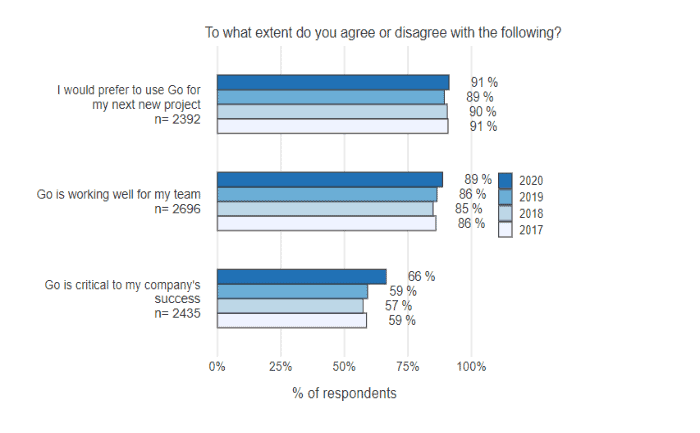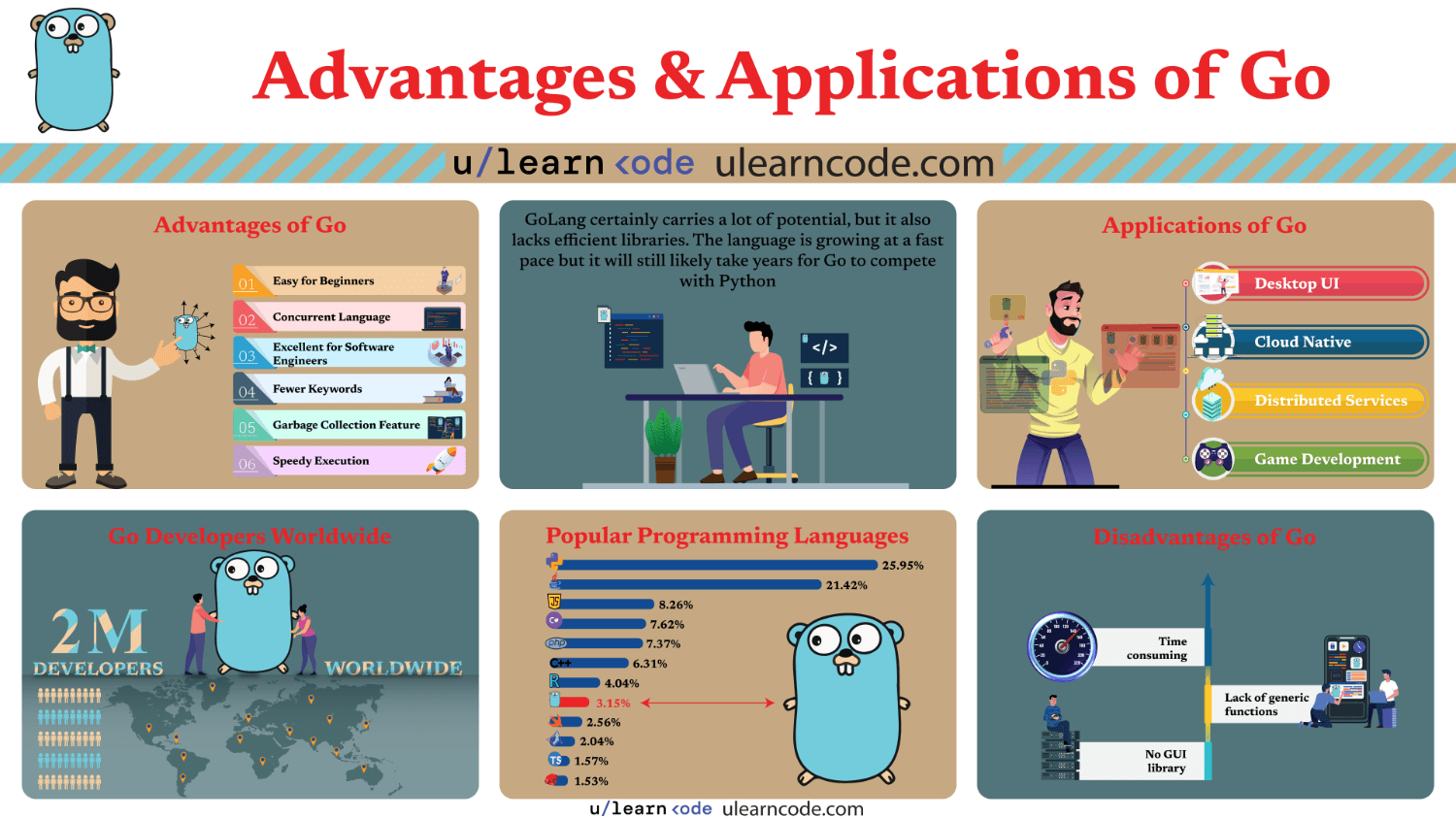Contents
Google needed a better language to control its workflows, so back in 2007, three Google engineers brainstormed together to invent Go, which was later released in 2009. Go just kept improving with every release, and GoLang 1.5 was a major release with a lot of enhancements.
The Tiobe Index also marked GoLang as the “language of the year” back in 2016. Soon, it became the ninth fastest-growing language on Github. According to 2019’s Go Developers Survey, over 66% of developers disclosed that they use Go for their web development purposes.

It is an undeniable fact that Go is certainly picking up the pace to compete with the top five languages and this article is focused on why exactly you should learn it and where you can efficiently use it in the world of programming.
Uses of Go Prorgamming Language
The language has a number of applications, but still, it’s not mature enough to compete with Java or Python due to its limited libraries and frameworks. However, the future of GoLang is promising.
1. Desktop UI Development
GoLang is pretty efficient in developing UI with the help of a few packages. However, there is currently no native support available for UI development, and as stated, the libraries are limited and they lack maturity.
Currently, UI development is possible to some extent, but programmers currently still prefer other programming languages like C++ and Java. However, it is very possible for GoLang to step up in this specific area by introducing more matured libraries, which will simply take time.
If you want to indulge yourself in this domain, then direct your attention to some desktop UI courses to start your journey.
2. Cloud-Native Development
Cloud development is a huge domain that carries a lot of potential for new programmers. There are multiple languages like Python that have libraries and frameworks available for this purpose, but none of them can compete with the concurrency of GoLang when it comes to cloud-native development.
GoLang allows you to create excellent cloud-native apps thanks to not just its concurrency, but also networking, and speed features. The language has facilitated these processes for many popular apps, including:
- Docker
- Istio
- Kubernetes
If your goal is to become this type of developer, then GoLang can be your ideal option. Start your journey right now by choosing some cloud app development courses.
3. Distributed Network Services
Many GoLang programmers are amazed by the concurrency of this language, and that’s exactly what makes Go an ideal option for distributed network services, as this is a significant factor that can make or break a network application.
Go has various native concurrency features, including channels and goroutines, making it powerful enough for distributed network applications.
That’s why many networking and cloud services revolve around GoLang. However, many other programming languages like Python can also do better in this area.
If your aim is to become a network application developer, then join helpful network app courses to start learning.
4. Game Development
We have been using Java for years in this area, but now programmers are slowly shifting to the faster GoLang, which can significantly improve performance. Go is still far behind the other major game development languages, but the future seems promising.
G3N is an OpenGL 3D Game engine that was proudly developed using Go. It is mainly focused on creating 3D experiences and rich representations. G3N provides an integrated GUI framework with numerous functions to streamline the processes.
If this is your thing then we suggest you join these amazing game development courses that will take you from zero to a pro-level.
Why Learn Go

There are a variety of reasons to learn Go, especially considering the fact that it is developed by engineers at Google:
1. Easy for Beginners
If you are just starting out in programming then Go should be your language of choice because it has a comparatively smaller, easier, and cleaner syntax.
There is no need to sift through any documentation pages in order to learn Go syntax; you can simply join any of these best Go courses for that purpose.
2. Concurrent Language
This is a major factor that matters a lot in advanced programming, especially in network applications. Go provides many concurrency features that allow programmers to do multiple things at once using the Go code.
3. Excellent for Software Engineers
Go is purely a problem-solving language that uses a more practical approach rather than confusing programmers with complex coding academics. Any person can learn and use Go for solving specific problems because its main intent is to help developers in an easy way.
4. Fewer Keywords
Unlike older programming languages, GoLang makes it easy for programmers to remember keywords. By condensing many of the older concepts, they now only use 25 keywords while older languages such as Java use over 50.
5. Comes with a Garbage Collection Feature
Developers find garbage collection very tedious, which is why they want programming languages to have this feature. Luckily, GoLang comes with a built-in garbage collector that enables programmers to write error-free code by also cutting off the manual memory management costs.
6. Speedy Execution
Traditional languages like Java are very slow when it comes to execution because it first compiles the program using JVM before executing it.
Go, on the other hand, is statically typed. Hence, your code is very closely related to low-level languages which makes it easier and faster to compile and execute.
In Summation
GoLang certainly carries a lot of potential, but it also lacks efficient libraries. The language is growing at a fast pace but it will still likely take years for Go to compete with Python.
While it is already beating Python on some grounds due to its efficient performance and speed, there is still a long way to go from here.
Go is expanding in web and game development domains and it is already being used in the creation of cloud-native apps. Hence, we can expect a lot from GoLang in the near future.